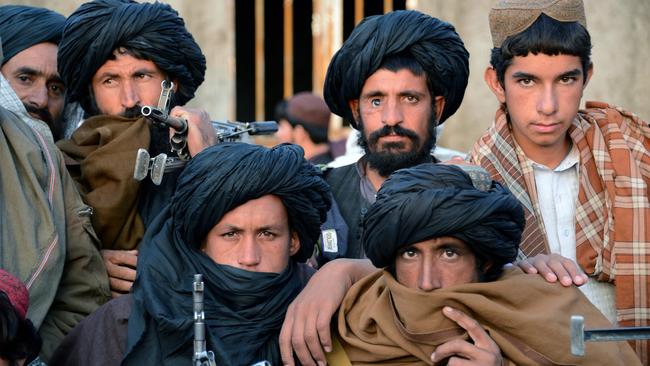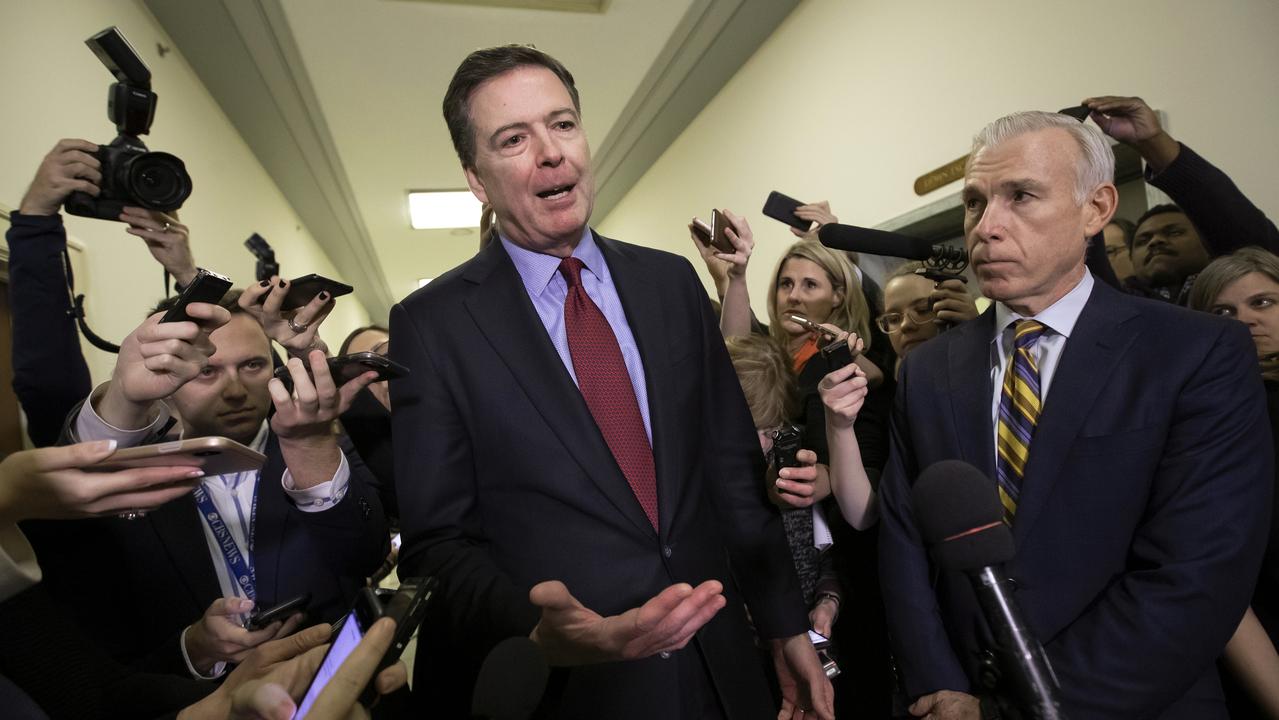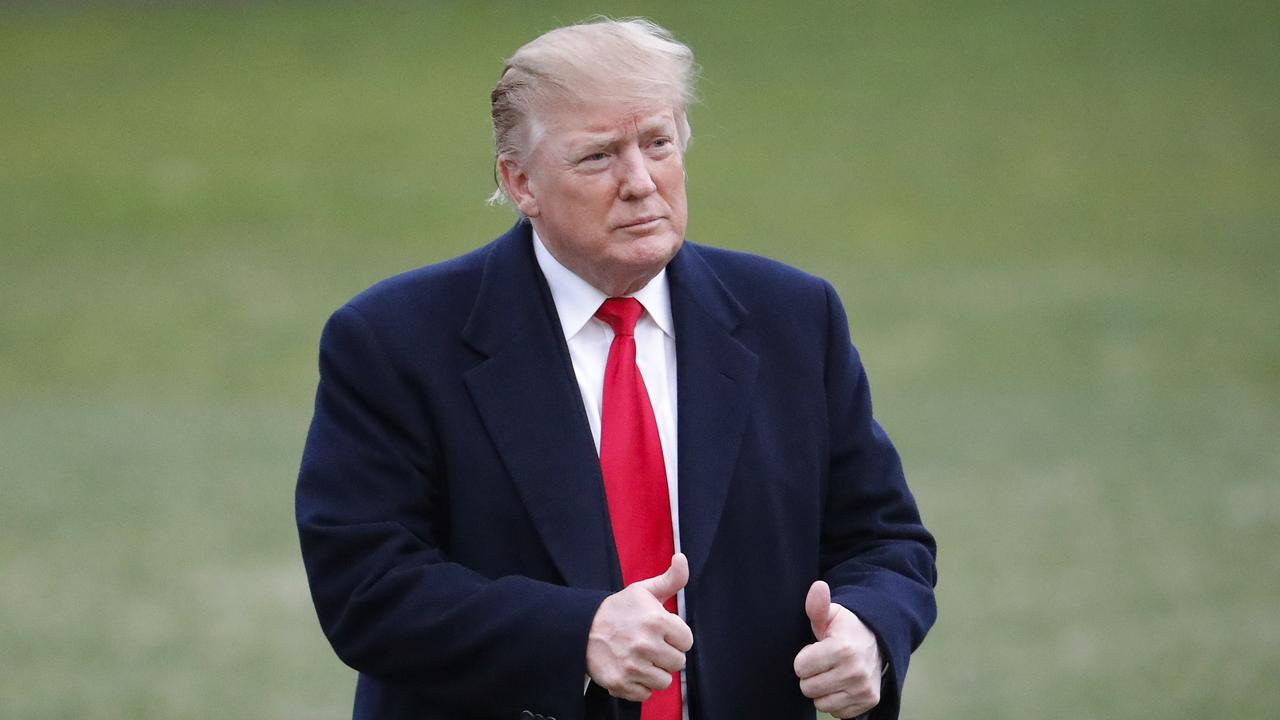
One winter’s night in December 2009, I found myself with two Taliban emissaries in the back of a restaurant in Kabul. I was a civilian counterinsurgency adviser to NATO at the time, running a network of assistance teams across Afghanistan, and the commanding general’s staff had asked me to meet two brothers from Kandahar, relatives of a senior Taliban leader, who claimed that, while not members of the insurgency, they had a message to pass.
A few days earlier, US President Barack Obama had given his West Point speech, announcing a troop surge but also naming a withdrawal date. Guerilla diplomacy is normal in Afghanistan, where fighting and talking are not opposites but complementary, continuous activities. But for supposed “non-insurgents” the brothers were thoroughly gunned-up: they swept into the courtyard in a convoy of mud-spattered Toyotas festooned with gear, and their heavily armed escorts spent the next few hours hanging out in the parking lot with my security team, around a bonfire they continually stoked against the sub-zero chill.
Inside, my interpreter, my senior team leader (an experienced former intelligence officer) and I sat down with the brothers. A waiter laid out hummus and falafel, and then beat a hasty retreat. We looked at each other across the table.
The brothers had been prickly, to say the least. They’d used an intermediary to pass a series of cryptic messages stipulating the exact location and time for the meeting, demanding various security guarantees and refusing to meet my deputy because she was a woman. This made me expect a pair of unreconstructed extremists.
But as the waiter withdrew, the brothers took off their turbans and the younger of the two produced a bottle of Johnnie Walker Blue Label whisky from his capacious cloak. (He turned out to have another bottle and several weapons in there.) The five of us — actually, mainly the two of them — drank both bottles over the course of a three-hour meeting that mellowed considerably as it went on. They were the opposite of what I’d expected: urbane, politically sophisticated realists, and relatively moderate (drinking habits aside).
Their message was simple. Obama had announced the coalition would begin pulling out in July 2011, so Taliban leaders were planning to reach out to the Afghan people with a message of their own: “You might like the Americans, but they’re leaving in July — and what are you going to do in August? Because we’ll still be here after they go.” They were planning to keep their main force safe in Pakistan during the surge, maintain a few guerilla networks in Afghanistan to keep themselves in the game, then come back after we left. Why not short-circuit the process, the brothers asked: “You’re leaving anyway. Your President just very helpfully told us exactly how long we need to wait until you leave, and you know we’ll come back as soon as you go. Why don’t you just leave now?”
They went on to promise three things that turned out to be completely consistent with the Taliban negotiating position in talks that began the following summer, sputtered along for years, and are expected to restart later this month.
First, they promised not to threaten any other country. They had no desire to export jihad, they said, and only wanted to live under sharia (Islamic law) in their own country. Second, they committed to distance themselves from al-Qa’ida and Osama bin Laden and offer no further support to the group. Third, they expressed a willingness to share power, but only under a constitution based on sharia. In return, they wanted all foreign troops (though not necessarily civilians) out of Afghanistan, Taliban prisoners released, their leaders removed from targeting lists, and an end to what they called “poisonous propaganda against the Islamic Emirate of Afghanistan”, the movement’s formal name.
I had lots of questions. What about human rights and, in particular, women’s education? Sure, they told me — they had no problem with women going to school, as long as foreigners didn’t dictate the curriculum. What about violence against other ethnic groups and religious minorities? They would accept regional spheres of influence, they said, though the Pashtun region would obviously be Taliban-controlled. What about then-president Hamid Karzai? This brought the sharpest response: Karzai was a “country-seller”, his half-brother Ahmad Wali was “trampling the constitution”, and his allies — such as Spin Boldak police chief General Abdul Raziq, son of a famous anti-Taliban warlord killed in the 1990s — were “enemies of the people”. The jihad could not stop until all foreign troops were out and these traitors were gone.
Again, this foreshadowed later talks, held privately in Europe in 2011 and formally in Qatar and Pakistan in 2012-14. Coalition leaders and the Kabul government wanted the Taliban to stop fighting and accept the new Afghan constitution before any broader peace talks took place, while the Taliban wanted foreigners out and a power-sharing deal to be agreed before any ceasefire, and rejected outright the primacy of the constitution or the legitimacy of Karzai’s government.
I passed the brothers’ message on, of course, but it was clear that the two sides’ preconditions for a negotiated settlement were much too far apart to be resolved without changing the facts on the ground — a process that would inevitably entail significant violence. That was precisely what happened during the surge.
From a few weeks after that meeting until late 2012, more than 30,000 extra American and allied troops, along with increased airstrikes, improved intelligence, and special operations raids, did massive damage to Taliban networks in Afghanistan (though leaving their safe haven in Pakistan largely untouched).
Expanded stabilisation programs — in economic development, health, education, agriculture, governance and reconciliation — increased our already vast reconstruction effort, with hundreds of civil officials coming to Afghanistan as part of a “civilian surge”. And huge efforts were made to increase the size, and improve the capability, of the Afghan army and police.
Results were encouraging at first. Taliban influence in Kandahar and Helmand provinces (in the southeast and south) was sharply reduced in a series of major combat operations by US, British and Canadian forces, and the insurgents’ hold was broken on key towns and communications routes. In just one year, 2011, the average age of Taliban field commanders in the south dropped by 10 years, indicating that we had killed or captured an entire generation of mid-level guerilla leaders. In the country’s east, French and US troops extended the government presence into contested areas.
Afghan civilian officials such as Hanif Atmar (interior minister and later minister of rural reconstruction and development), Amrullah Saleh (intelligence chief) and Mohammad Gulab Mangal (governor of Helmand) emerged as capable, energetic leaders.
Afghan troops trained by Australia, New Zealand, the US and others proved increasingly able to confront the guerillas, albeit with heavy reliance on coalition airpower, intelligence, medical and maintenance support.
Given this progress — plus a boost in optimism after US Navy SEALs killed bin Laden in May 2011 — the coalition stuck to its timeline. Obama insisted the drawdown must start on schedule in mid-2011, and NATO leaders agreed to complete it by December 2014.
All NATO combat units withdrew by the end of 2014, airstrikes and advisory support were trimmed back, reconstruction spending was cut, and the International Security Assistance Force (the NATO-led combat force, which peaked at 130,000 troops in 2012) was replaced with a light-footprint assistance mission (Operation Resolute Support, with about 12,500 troops) on January 1 last year. But as the surge ended, four problems became clear.
First, governance and corruption remained huge grievances for ordinary Afghans. Atmar, Saleh and Mangal turned out to be the exceptions that proved the rule. Corruption undermined military progress at every turn: however hard coalition troops worked to bring rebel-held areas under the control of the authorities in Kabul, so many officials remained corrupt and oppressive that extending the government’s reach often made things worse.
Second, in Afghanistan’s north, relatively quiet until 2009, a new insurgency built up, threatening provinces such as Kunduz and Badakhshan and cities such as Mazar-i-Sharif, spreading the insurgency north and west as pressure increased on the Taliban in its southern and eastern heartland. Like toothpaste in a tube, putting pressure on the guerillas in one place simply pushed them into another — and coalition leaders simply never committed enough troops or firepower to dominate the whole of Afghanistan at once.
Third, the surge ended before Afghan forces were ready to take the reins from ISAF. By last year, some Afghan units showed excellent fighting capacity and police professionalism had increased vastly (albeit off a shockingly low base), but Afghan ground forces were still too dependent on coalition airpower and logistics, the air force wasn’t ready for independent operations, and higher defence and police organisations lacked the institutional capacity for mundane but critical things such as management, personnel, planning and budgeting.
Finally, the targeting of mid-level Taliban commanders in raids and drone strikes — the effort that had destroyed an entire layer of the insurgency in 2011 — backfired badly. Trust broke down between senior Taliban commanders (who, true to their word in 2009, stayed safe in Pakistan throughout the surge) and junior leaders who felt abandoned. A new generation of hot-headed, more radical commanders emerged at the lower level: younger men, blooded in the surge and far less willing to negotiate than the brothers I’d met in 2009.
This lack of cohesion made it extraordinarily difficult to achieve progress in peace talks, which went nowhere between 2010 and 2015, despite several false starts and mediation by regional and international players.
The death of Taliban supreme leader Mullah Mohammed Omar in 2013 (which his successor, Mullah Akhtar Mohammed Mansour, hid until mid-2015) meant the movement lacked a unified leadership empowered to negotiate peace. And even if they had been empowered, core Taliban leaders could not have enforced any deal, since they had now lost control of many junior commanders — the same mid-level leaders who would have to play along if any deal was to stick.
These problems emerged clearly in 2014. During that year’s fighting season the Taliban mounted a series of offensives to regain influence as NATO pulled out. It attacked in Kandahar, Helmand, the eastern provinces of Nangarhar, Nuristan, Khost and Paktia, and in the north.
Afghan troops — in their first full campaign season without major coalition ground combat units — acquitted themselves very well, regaining control of almost all the lost areas by the end of the year and supporting a successful and largely peaceful election that produced a national unity government jointly led by the capable technocrat Ashraf Ghani as President, with former foreign minister Abdullah as Chief Executive.
But 2014 was extremely hard on Afghan forces — casualties were high, desertion rates spiked, equipment was wearing out through constant use, and it was hard to see how the security forces, despite enormous improvements since 2009, could sustain this kind of pressure. Units such as 205th Corps in Kandahar and 215th Corps in Helmand — two of the most capable formations in the Afghan army — were working at a tempo that was far too high for them to recover between operations. Afghan special forces and aviation also performed well in 2014 — but they were still too dependent on American support. And as Islamic State launched its blitzkrieg in Iraq in mid-2014 and US assets were diverted to deal with the crisis, this support began to look increasingly shaky.
These problems came to a head last year. In April, the Taliban’s new commander for northern Afghanistan, Qari Baryal, mobilised his network of regional allies — including hundreds of fighters from several Taliban factions and militants from Pakistan and Uzbekistan — and launched a fierce assault against the northern provincial capital of Kunduz. The Afghan army and police kept them out of the city in April-May in a desperate effort that tied up thousands of troops, but by late September the insurgents had recovered enough to mount another attack, capturing the entire city and holding it for almost two weeks into mid-October.
The fall of Kunduz was a huge shock. Not only was it the first large city to fall to the Taliban in the entire war since 2001 — a serious blow to popular confidence in a country where cities have been relatively safe — but it had a historical echo. Kunduz was the first town to fall to the Mujahideen after the Soviets left in 1989.
As these northern battles played out, Taliban columns attacked in Helmand, Kandahar and elsewhere. Towns such as Marjah, Khan Neshin, Kajaki, Nawzad and Musa Qala — all wrested from the Taliban in hard-fought battles during the surge — were besieged or back in Taliban hands by late last year. More than a third of the country was Taliban-held or contested by early this year. And unlike 2014, this time around Afghan troops and police proved unable to recover the lost ground, leaving the government in a more threatened state than at any time since 2009.
In Oruzgan, where 35 Australians died and many more were wounded in a sustained effort to secure the population and train Afghan troops, the Taliban mounted a series of large-scale attacks involving hundreds of fighters. It killed dozens of police and soldiers and gained virtually complete control of two of the province’s six districts.
At least two more are heavily contested. Last month Taliban assassins killed 12-year-old Wasil Ahmad, a boy who became famous defending his village in Khas Oruzgan, shooting him in the head in broad daylight on a main street of the provincial capital, Tarin Kowt.
But that wasn’t the worst of 2015: as Kunduz fell, a new player emerged from the shadows — Islamic State. The group had established a regional branch (wilayat) in 2013-14 in Pakistan, and steadily expanded its influence into the south and east of Afghanistan.
Many reports of Islamic State’s black flags appearing in Afghanistan began to come out early last year, and there were violent clashes between the Taliban and fighters from Islamic State — who saw the Afghan movement as insufficiently radical and criticised senior Taliban leaders’ strategy of waiting out the coalition drawdown, which they saw as too passive.
Tellingly, many Islamic State leaders in the new Wilayat Khorasan (covering Afghanistan and Pakistan) were disaffected former junior commanders from the Afghan and Pakistani Taliban, the same hotheads who had been cut adrift in the surge. Late last September they made their move, seizing multiple police stations and attacking government posts in Nangarhar, carrying out several bombings, and continuing to expand their control since then.
I’ve been back to Afghanistan many times since the end of the surge, and I keep in touch with Afghans I’ve worked with over the years. As they are the first to tell me, it’s not all bad.
There’s still great resilience in Afghan society, huge progress has been made in public health, education, inclusion of women in politics and business, human rights and economic prosperity.
There still are capable Afghan officials, and the government is more efficient and less corrupt than it has ever been (though only by comparison to its previous parlous state).
Afghanistan still has capable military and police units. And the new US military commander — General John “Mick” Nicholson, who will take up his appointment in the next few weeks — is one of the best coalition officers ever to fight in Afghanistan, with excellent relationships across the country and a track record of battlefield successes stretching back to the very early days of the war.
Washington has also recognised the problem, committing to delay the drawdown of advisers under Resolute Support, sending special operations forces to fight in Helmand and elsewhere, and most recently deploying several hundred light infantry soldiers to Helmand. That regiment, 2nd Battalion, 87th Infantry, part of the elite 10th Mountain Division, is one of the most experienced US units of the Afghan war, with a string of victories in the country’s east and south, and long experience working with Afghan troops and special operations units.
Still, it’s an open question whether these efforts will be enough to stop the rot. It may be a case of too little, too late. And as conflict escalates in Iraq and Syria, dragging in even more US and coalition troops and aircraft, the level of support available to the increasingly beleaguered Afghan forces is only likely to decline even further.
Each time I talk to friends in Afghanistan, I see decreasing confidence on the part of government officials, urban elites and ordinary people in the towns and villages. And the sense of concern today is worse than I’ve ever seen it.
The Taliban and its allies launched an unprecedented string of attacks in downtown Kabul and other cities early this year. They increased control of rural terrain in the south, east and north, even as the army continued to struggle with an unsustainable tempo and lack of air support, intelligence and logistics. And Taliban negotiators continued to push the same basic line that the brothers outlined to me back in 2009.
But in many ways, the rise of Islamic State is even more of a threat to the Taliban than to Kabul or the coalition, because it fundamentally undercuts the Taliban leaders’ strategy of waiting out NATO’s withdrawal. The Taliban strategy, then as now, was one of protracted war: waiting for us to leave, then emerging to seize enough of Afghanistan to force Kabul to negotiate on their terms. This may have made sense two years ago, before Islamic State emerged, but not any longer.
I quickly lost touch with the Taliban emissaries I met in 2009. I have no idea if they even survived the surge. But if I could find them, here’s what I would tell them: “Time is running out for the Taliban. For years, you joked that we had all the watches and you had all the time. You waited us out, kept your powder dry, and planned your comeback.
“But times have changed — a new generation of radical leaders, men who would never in a million years crack open a whisky bottle with a foreign infidel, men who see you as weak and soft, have come from the shadows.
“This year is your last chance to make peace, to lock in your gains and negotiate a deal with Kabul and the international community. Because if you don’t, 2016 in Afghanistan may end up looking a lot like 2014 in Iraq — and if that happens, Islamic State will eat you alive.”
David Kilcullen was a senior adviser to US general David Petraeus in 2007-08, when he helped to design the Iraq war coalition troop surge; he was also a special adviser for counter-insurgency to former US secretary of state Condoleezza Rice.







To join the conversation, please log in. Don't have an account? Register
Join the conversation, you are commenting as Logout